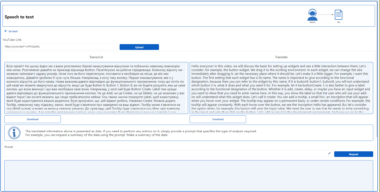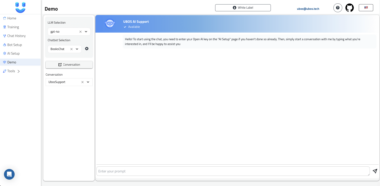Frequently Asked Questions (FAQ)
Q: What is an MCP Server? A: An MCP (Model Context Protocol) Server acts as a bridge, allowing AI models to access and interact with external data sources and tools in a standardized and secure manner. The UBOS Asset Marketplace’s MCP server focuses on filesystem operations.
Q: What are the key features of the UBOS Asset Marketplace’s MCP server? A: Key features include granular permission controls, secure file operations within allowed directories, a comprehensive API for file and directory management, advanced file editing capabilities, XML to JSON conversion, and symlink control.
Q: How does the MCP server ensure data security? A: The MCP server implements a comprehensive security model with granular permission controls, including directory access control, permission flags (read-only, full access, create, edit, move, delete), symlink handling, and path validation.
Q: What file operations can I perform with the MCP server? A: You can perform a wide range of file operations, including reading, writing, modifying, creating, listing, deleting, moving, and searching files and directories.
Q: Can I convert XML files to JSON format using the MCP server? A: Yes, the MCP server provides tools for converting XML files to JSON format (xml_to_json and xml_to_json_string) and querying XML files using XPath expressions (xml_query).
Q: How do I configure the MCP server’s permissions?
A: You can configure permissions using command-line arguments or configuration files. Key permission flags include --readonly, --full-access, --allow-create, --allow-edit, --allow-move, and --allow-delete.
Q: Can I specify multiple directories for the MCP server to access? A: Yes, you can specify multiple directories. However, permission flags apply globally to all specified directories. For different permission levels, create multiple server configurations.
Q: How does the MCP server handle symlinks?
A: By default, symlinks are followed. You can disable symlink following using the --no-follow-symlinks flag.
Q: How do I integrate the MCP server with Claude Desktop or Cursor?
A: Add appropriate configuration to claude_desktop_config.json (for Claude Desktop) or .cursor/mcp.json (for Cursor), specifying the command and arguments for running the MCP server.
Q: What is the relationship between the MCP server and the UBOS platform? A: The MCP server seamlessly integrates with the UBOS platform, a full-stack AI Agent Development Platform, allowing AI agents to securely access and manage files and directories. The UBOS platform helps orchestrate AI Agents, connect them with enterprise data, build custom AI Agents with your LLM model and Multi-Agent Systems. Organizations can leverage the power of AI to improve efficiency and productivity while ensuring data security.
Q: What is the license of the MCP server? A: The MCP server is licensed under the MIT License, allowing you to use, modify, and distribute the software subject to the terms and conditions of the MIT License.
Filesystem Server
Project Details
- rawr-ai/mcp-filesystem
- @modelcontextprotocol/server-filesystem
- Last Updated: 4/21/2025
Recomended MCP Servers
An MCP server that connects to your React Native application debugger

Use Figma in a MCP with Chunking Support
MCP server for interacting with Neon Management API and databases

A MCP server for Magento 2

Servidor MCP para integração com a API TESS, permitindo utilizar agentes TESS via protocolo MCP
A MCP server for Cappt (Python version)

This repository is dedicated to DL.
Memory for AI Agents in 5 lines of code
This is an MCP server that allows you to directly download transcripts of YouTube videos.

This read-only MCP Server allows you to connect to Google Cloud Storage data from Claude Desktop through CData...
 From vibe coding to vibe deployment. UBOS MCP turns ideas into infra with one message.
From vibe coding to vibe deployment. UBOS MCP turns ideas into infra with one message.






